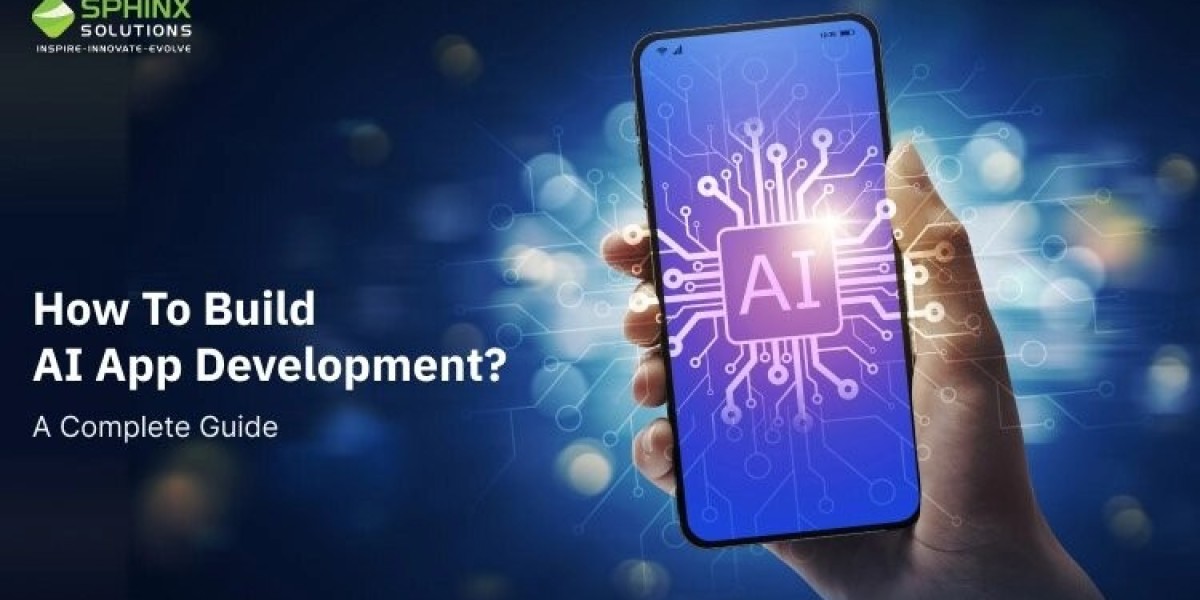Entering the realm of custom AI app development, including generative AI development, is a strategic move for startups and enterprises aiming to offer personalized user experiences and maintain a competitive edge in the global market. As of 2023, the global mobile app market was valued at $228.98 billion and is projected to grow at a CAGR of 14.3% from 2024 to 2030.
These figures highlight that custom mobile applications are lucrative alternatives essential for sustained business success. However, developing successful AI-driven mobile apps requires thorough planning and well-defined strategies. This guide will walk you through the process of building an AI app.
How to Build an AI App?
According to an AI app development company, developing an AI-driven app involves several steps, from project planning to AI integration. Here are the key steps to building an AI-powered app:
Step 1: Define Your Project Objectives and Scope
First, clearly define your AI app development project objectives and goals. Identify your target audience and address their pain points. Based on this, create a detailed project objective to streamline the development process and ensure your application meets real user needs.
Step 2: Collect and Process Data
Data is crucial for any AI application. Collecting relevant and high-quality data is essential for training AI models. Depending on your app, data can come from various sources such as public datasets, user-generated data, and third-party APIs.
Step 3: Select the Right Tools
Choosing the appropriate frameworks and tools is vital for advanced AI app development. Here are some important programming languages and AI frameworks:
- Programming Languages: Python is widely used for custom AI app development. Julia and R are also utilized for creating AI-driven mobile apps.
- AI Libraries & Frameworks:
- PyTorch: Developed by Facebook, PyTorch is a flexible library used for deep learning.
- TensorFlow: Developed by Google, TensorFlow is an open-source library for deep learning applications.
- Keras: A high-level neural networks API that runs on top of TensorFlow.
- scikit-learn: A Python library used for machine learning algorithms.
Step 4: Train AI Models
After gathering data and selecting tools, develop and train your AI models. This involves several steps:
- Model Selection: Choose the right model based on your project (e.g., regression, classification, clustering).
- Model Architecture: Design the neural network architecture, including the number of neurons and layers.
- Training: Train your AI model with the prepared dataset, involving data feeding, weight adjustments, and model optimization.
- Evaluation: Assess the performance of your AI model using metrics like precision, accuracy, and recall.
Step 5: Integrate AI into the Application
Once your AI model is validated and trained, integrate it into your app. This process includes:
- Model Deployment: Deploy your AI model to production where it can handle real-world data. Options include cloud solutions like Google AI Platform, Microsoft Azure ML, and AWS SageMaker.
- API Development: Create APIs to interact with your AI model, allowing your app to send data to the model and receive predictions or insights.
- User Interface: Develop a user-friendly interface (UI) that enables users to interact seamlessly with AI-driven features.
Step 6: Track and Maintain
After deploying the AI-driven application, focus on ongoing maintenance and monitoring to enhance performance. This includes:
- Performance Monitoring: Track app performance and address any issues or deviations.
- Model Retraining: Periodically retrain your AI model with the latest data to maintain accuracy.
- User Feedback: Collect feedback from users to identify areas for improvement and enhance the user experience.
Expert Tips for Successful AI App Development
Whether you're building an app from scratch or adding new features to an existing platform, these tips can simplify the process:
Tip 1: Focus on Your Business Objectives
Define your project goals and address the challenges you aim to solve. Conduct market research to identify your target audience and project scope. Consider these questions:
- What are your objectives?
- Who is your target audience?
- What is the scope of your project?
Tip 2: Select the Appropriate Platform and Tech Stack
Once you have clear business objectives, select the appropriate libraries and frameworks for AI app development. Popular AI frameworks include PyTorch, TensorFlow, and Keras. Use cloud platforms like Microsoft Azure, AWS, and Google Cloud for integrated AI solutions and scalable computing.
Tip 3: Prioritize User Experience
User experience is crucial for making your AI app user-friendly. Consider these design features:
- Clean UI and navigation with high responsiveness.
- Fast app loading and response times.
- Easily accessible app support, including FAQs.
Tip 4: Conduct Thorough Testing
Testing and quality assurance are essential for optimizing app performance. Test your app across:
- Multiple devices (smartphones, tablets).
- Different operating systems and versions.
- Various bandwidth constraints.
- Heavy resource loads.
How Much Does It Cost to Build an AI-Driven App?
The total cost of AI application development with custom features typically starts at $50,000 and can go up to $200,000. Costs vary depending on project complexity, app features, choice of tech stack, development team size, and developer rates. When planning your budget, it's also essential to consider the need to hire AI developers who can bring specialized skills and expertise to your project, ensuring high-quality results and efficient implementation. Here's a breakdown of AI app development costs:
Elements | Tasks | Estimated Costs |
Research & Analysis | Thorough research, market trend analysis, competitor analysis | $200 to $450 |
User Experience Design | Prototyping, low-fidelity wireframes, high-fidelity wireframes | $4,000 to $10,000 |
UI Design | UI mockup samples, final mockups | $20,000 to $50,000 |
AI Integration | Custom AI features, chatbot development, NLP technology | $30,000 to $80,000 |
App Animations | Visualizing on-screen content, direct manipulation, user visualization | $2,000 to $15,000 |
Final Words
Developing a feature-rich AI app is a complex process requiring strategic approaches, significant investment, and effort. By following the tips outlined above, you can streamline the AI app development process and successfully launch your app. Ensure your strategies are well-defined and carefully crafted to align with your business goals.
Read the original article- Complete Guide to AI App Development



